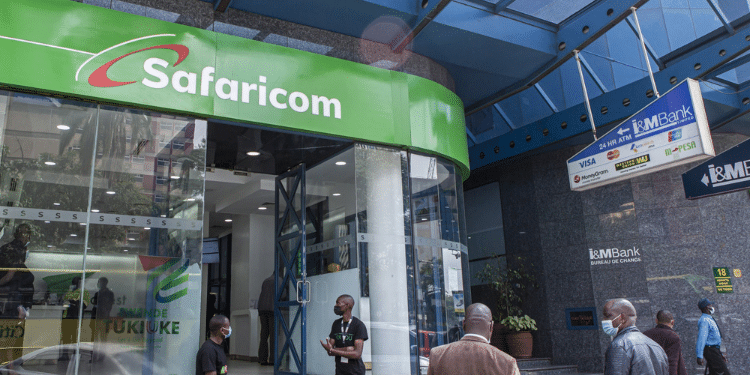In a world where financial inclusion is still out of reach for hundreds of millions, MiniPay is mapping out a path toward accessible, affordable, and user-friendly digital finance.
With its newly launched standalone app for iOS and Android, MiniPay aims to address a critical need in Africa’s unbanked and underbanked communities, providing a simple dollar wallet solution built on stablecoins and designed for real-world use.
With over 7 million wallets opened across 50+ countries, MiniPay isn’t just another blockchain experiment. It’s a fintech tool born in the depths of emerging markets, now optimised for standalone performance beyond the Opera Mini browser where it first launched.
A Dollar Wallet Without the Complexity
Traditional banking remains inaccessible for many across sub-Saharan Africa. Documentation barriers, transaction fees, poor infrastructure, and lack of interoperability make it hard for people to save, send, or spend money with confidence.
MiniPay changes that.
The app supports cUSD, USDT, and USDC, stablecoins pegged to the US dollar, allowing users to store value safely and spend it meaningfully. But what sets MiniPay apart is its onboarding simplicity:
- No seed phrases.
- No crypto jargon.
- No blockchain knowledge required.
Users can sign up using just a Google or iCloud account and a phone number, enabling near-instant access to global digital finance with a local feel.
READ ALSO:
Why PalmPay is Expanding Beyond Mobile Wallets with a Verve Debit Card
Speed, Scale, and Sub-Cent Fees
MiniPay is built for fast, low-cost peer-to-peer payments. On the Celo blockchain, transactions settle in under 2 seconds, with transfer fees under $0.01, making it ideal for microtransactions, everyday spending, and cross-border transfers.
With MiniPay’s Pockets feature, developed in partnership with Mento Labs, users can even swap between stablecoins with zero fees, adding flexibility and choice without financial penalty.
Designed for Africa’s Realities
Where many apps still overlook the diversity of payment habits in African markets, MiniPay leans in:
- Supports local payment options like mobile money, bank transfers, and voucher-based systems.
- Allows for direct bill payments, airtime top-ups, and eSIM purchases in supported countries.
- Connects to a global network of on/off ramps, including Binance, Transak, Yellow Card, and Fonbnk to convert stablecoins into local currency and vice versa.
The result? A crypto-powered digital wallet that doesn’t feel like crypto at all.
A Travel Wallet for the Modern Nomad
MiniPay also caters to the growing class of digital nomads and regional travellers. Whether moving between Nairobi and Lagos or exploring Southeast Asia, users can load their stablecoins and access local services directly from the app without needing local bank accounts or physical cash. It’s global spending made as easy as opening WhatsApp.
Non-Custodial but User-Friendly
While many wallets either compromise on user experience or security, MiniPay strikes a rare balance:
- Users retain full control of their funds, a hallmark of non-custodial design.
- No manual key management or third-party wallet integrations are needed.
- The app experience feels familiar, mirroring everyday mobile apps while delivering the power of blockchain in the background.
As Jørgen Arnsen, EVP Mobile at Opera, puts it:
“MiniPay represents a new chapter in user experience: a simple, affordable dollar wallet that anyone can use, anywhere.”
What This Means for Africa’s Financial Inclusion
Africa remains the most expensive region for remittances and mobile money fees. In many countries, sending $10 can cost up to $2 in fees, a barrier for low-income users who rely on frequent small transactions. MiniPay brings that cost down to cents (or less) and expands access to:
- Stable savings (no devaluation risks like with local currencies)
- Cross-border commerce
- Emergency transfers and digital donations
As Rene Reinsberg, Celo Co-Founder, notes:
“MiniPay sets the gold standard for stablecoin-powered payments and applications and will continue to platform digital currencies to millions.”
Built by Opera, Powered by Celo
MiniPay is developed by Blueboard Limited, an Opera company known for its long history of internet accessibility tools in Africa. It runs on the Celo blockchain, a mobile-first Ethereum Layer-2 designed for global finance.
By combining Opera’s reach and Celo’s infrastructure, MiniPay doesn’t just promise financial inclusion; it delivers it at scale.
READ ALSO:
What You Need to Know About Paystack’s First Consumer Product Launch
Try It Today
The MiniPay standalone app is available for free on:
Whether you’re saving $10 for school fees, sending $2 to a family member, or topping up data before travel, MiniPay is bringing financial freedom to the palm of your hand.
Ronnie Paul is a seasoned writer and analyst with a prolific portfolio of over 1,000 published articles, specialising in fintech, cryptocurrency, and digital finance at Africa Digest News.







Leave a Reply